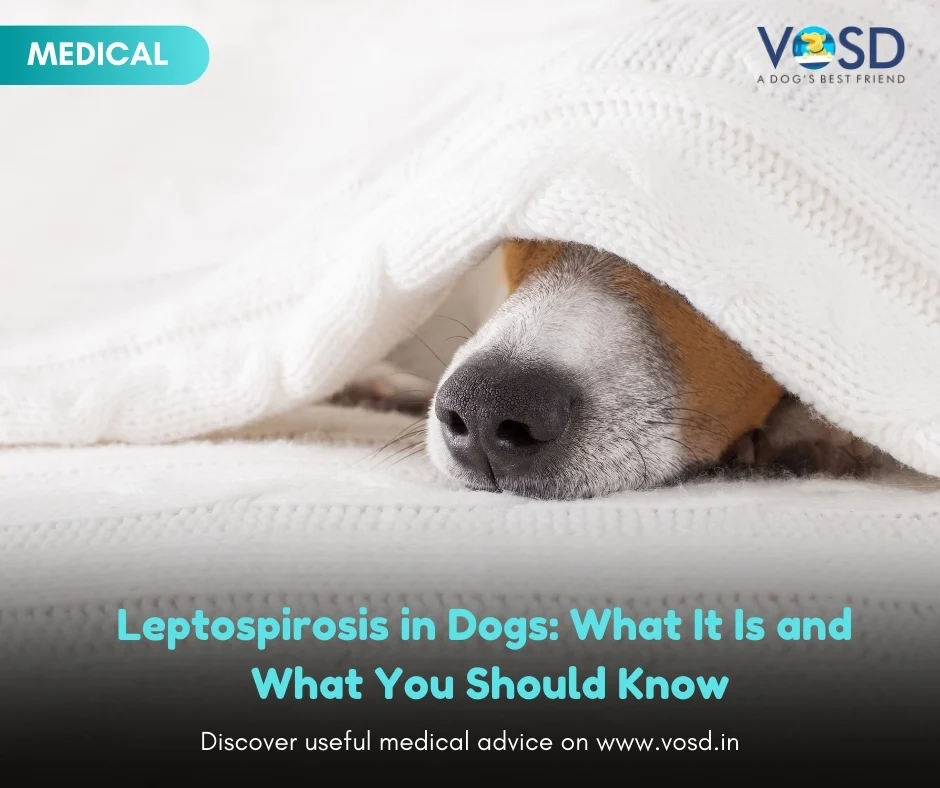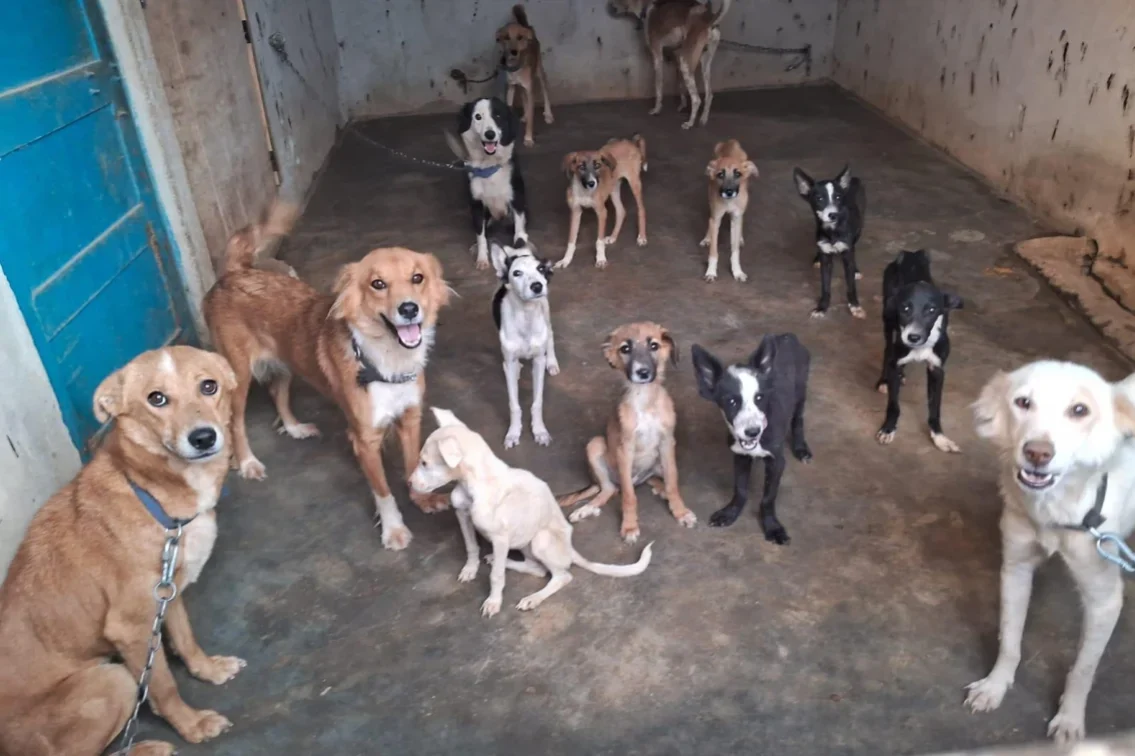What is Leptospirosis?
Leptospirosis is a bacterial infection, and it spreads through the bloodstream. This bacteria is called Leptospira. It is easy enough to get this bacteria from puddles of water if there is urine in the water from some infected wildlife. The bacteria gets under the skin of the dog. It can be serious and sometimes fatal. This bacteria can also spread from animals to human beings. Leptospirosis is common in warm climates and where there is high rainfall.
If your dog has cuts or scrapes and comes into contact with water bodies or soil with infected urine from other animals, your dog will likely develop Leptospirosis. This is also true of food and bedding that has infected urine. In some cases, dogs can pass this disease to their puppies through the placenta.
Leptospirosis can spread throughout your dog’s body and reproduce in the kidneys, liver, nervous system, eyes, and the reproductive system. In a few cases, the antibodies are quick to react, and your dog’s symptoms of fever will abate. The extent or severity of Leptospirosis in your dog will depend on the strength of the immune system and how effectively the infection can be removed. However, the bacteria may still remain in the kidneys and can reproduce there. Younger dogs are at greater risk because of their still-developing immune system.
Causes of Leptospirosis in dogs
- Direct contact with urine from other infected animals
- Open sore or cuts and scrapes exposed to infected urine.
- Drinking infected water
- Contact with infected soil, food, or mud.
Dogs that are at risk from Leptospirosis
- Hunting dogs
- Dogs living near marshlands or woods – The risk is greater because of muddy areas and stagnant water bodies
- Dogs living on farms: The possibility of infected wildlife is high in rural areas and farms.
- Dogs spending time in kennels: Kennels should be inspected thoroughly before placing your dog. The kennel should be clean and hygienic and free from rodents.
Stages of Leptospirosis in dogs
Leptospirosis can be classified as acute and subacute:
Acute infection: The incubation period of an acute infection is less than four days, and the consequences are serious. The symptoms are also severe, with a high fever, shivering, tender muscles. Protracted vomiting, dehydration eventually leads to kidneys and liver failure.
Subacute infection: The incubation period is between five and 14 days. Dogs show mild symptoms only with the most common ones being vomiting and dehydration, and anorexia.
Symptoms of Leptospirosis in dogs
Some of the common symptoms in dogs with Leptospirosis include:
- Fever and sudden illness
- Sore muscles
- Unwilling to move
- Stiff gait
- Weakness
- Depression
- Loss of appetite
- Increasingly thirsty
- Increased frequency of urination
- Inability to pass urine
- Dehydration
- Vomiting, sometimes with blood
- Diarrhoea
- Blood in the vaginal discharge
- Petechiae
- Anaemia
- Cough
- Breathing difficulties
- Swollen mucous membranes
- Swollen lymph nodes
- Inflammation in the eyes
Diagnosis of Leptospirosis in dogs
Your dog’s vet will need the complete medical history and a record of recent symptoms and activities. Any change in the area your dog may have visited will be helpful. Apart from this, your dog’s vet will do a physical exam including palpation of the abdomen, and order a chemical blood profile, complete blood count, urinalysis, fluorescent antibody urine testing and an electrolyte panel.
Blood and urine cultures will be required. To study your dog’s immune response to the bacterial infection, a titer test will be ordered to examine the antibodies in the bloodstream. An MAT (Microscopic agglutination test) is a standardized test for dogs with Leptospirosis. Additionally, a PCR (Polymerase chain reaction) test may also be ordered.
X-rays and ultrasound may also be ordered to study the bacterial infection in the internal organs.
Treatment of Leptospirosis in dogs
If Leptospirosis has been diagnosed immediately and treated with antibiotics, the prognosis can be favourable. In fact, it is better to start on the treatment even before the final test results are received. The antibiotics will depend on the condition of the infection. The course of antibiotics will be at least for four weeks. But, the risk of damaged kidneys or liver remains.
There are available vaccines to prevent Leptospirosis in dogs for around twelve months. Therefore, annual vaccination is recommended. More importantly, it is best to reduce exposure to sources of this bacterial infection.
If your dog is dehydrated, fluid therapy will be administered. An antiemetic will be prescribed for vomiting, and a gastric tube will be used to push food into your dog. In some severe cases, renal replacement therapy may be recommended.
Immediate hospitalization will be necessary if your dog has acute severe stages of Leptospirosis.
Supportive care for dogs with Leptospirosis
Your dog, if diagnosed with Leptospirosis and has undergone treatment for the same, you must ensure not only rest but also medication to control residual pain and essential nutrition to build back your dog’s strength.
What can you do as a pet parent?
Absolute rest is essential for your dog. It is best to place your dog in a crate to ensure that a recovery from Leptospirosis is smooth and easy. Your dog would have experienced physical trauma due to Leptospirosis. You may need to follow a strict schedule of mealtimes and potty breaks.
Protecting yourself from a dog with Leptospirosis
- Keep your dog away from other pets.
- Keep your dog away from children.
- Wear gloves and mask when handling your dog
- Clean and disinfect any area where your dog may have urinated, vomited, or other bodily fluids.
- Test yourself and family members for the Leptospira bacteria
Disclaimer:
The information contained in VOSD Vet Advice™ is not intended nor implied to be a substitute for professional medical action which is provided by your vet. You assume full responsibility for how you choose to use this information. For any emergency situation related to a dog’s health, please visit the nearest veterinary clinic.





